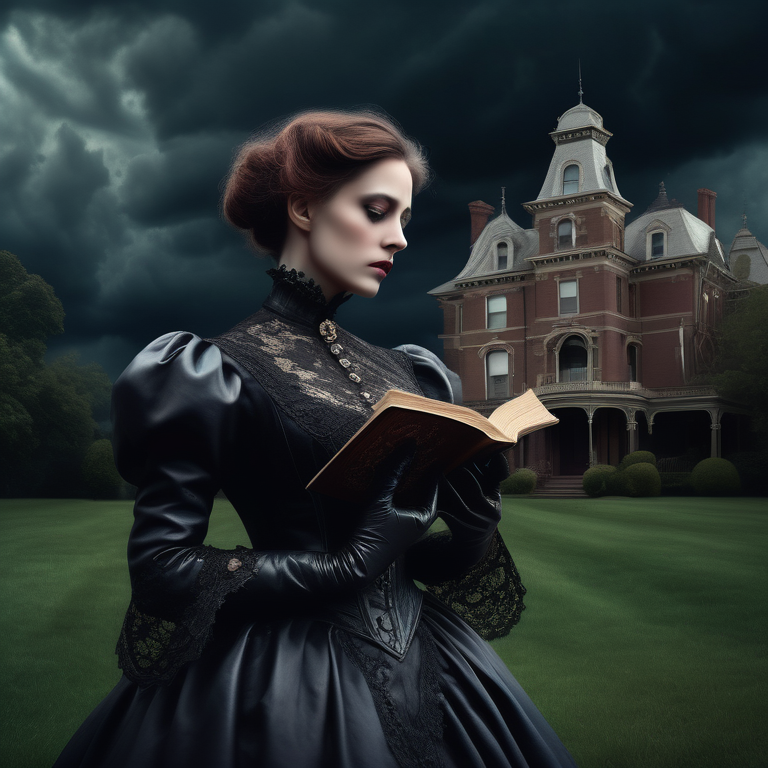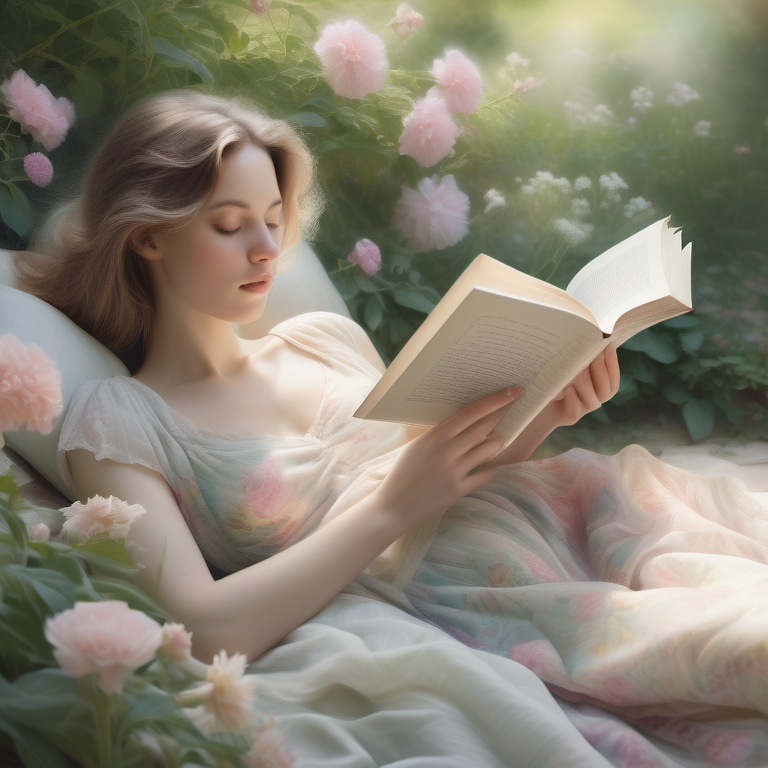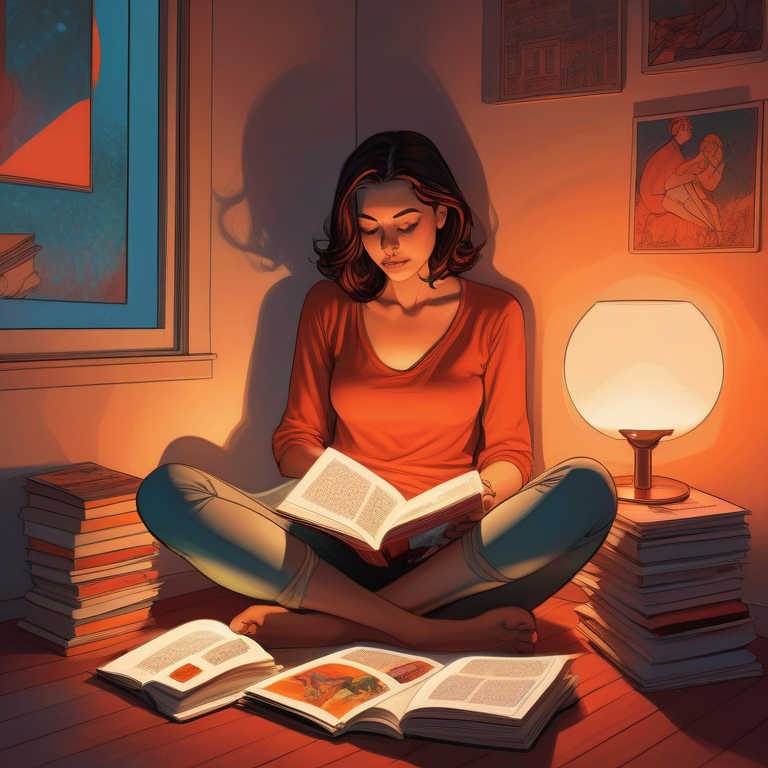Women’s Sexuality in Gothic Literature

Key Highlights
- The representation of female sexuality in gothic literature has been influenced by a male-dominated hetero-normative agenda.
- Female characters in gothic literature often face suppression and are trapped by male sexuality.
- Female sexuality is portrayed as a tool for entrapment or as a source of evil in gothic stories.
- Gothic novels often depict the conflict between female empowerment and victimization.
- The portrayal of women’s sexuality in gothic literature has evolved over time, with contemporary works offering a more nuanced perspective.
- Gothic architecture serves as a powerful symbol of sexuality in gothic literature.
Introduction
Women’s sexuality has long been a topic of fascination and controversy in literature, and gothic literature is no exception. The genre, characterized by its dark and mysterious themes, has often delved into the complexities of female sexuality, exploring the role of women in society and the restrictions placed upon them. From the earliest gothic novels to contemporary works, the representation of women’s sexuality in gothic literature has evolved, reflecting societal changes and challenging traditional gender roles.
The gothic genre emerged in the late 18th century and gained popularity throughout the 19th century, particularly in the United States. It was characterized by its eerie settings, supernatural elements, and exploration of the darker side of human nature. Gothic literature often incorporated themes of romance, horror, and the supernatural, providing a fertile ground for examining women’s sexuality within the constraints of society.
In this blog, we will explore the evolution of gothic literature and its portrayal of women’s sexuality. We will examine the origins and influences of the genre, the emergence of the female gothic, and the symbolism and representation of women’s sexuality in gothic novels. We will also discuss key works and authors in gothic literature, the role of gothic architecture as a symbol, the intersection of feminism and the gothic, and the archetypes and tropes commonly found in gothic narratives. By delving into these themes and examining the portrayal of women’s sexuality in gothic literature, we can gain a deeper understanding of the genre and its significance in shaping cultural narratives.
The Evolution of Gothic Literature
Gothic literature, with its roots in the late 18th century, has evolved over time, reflecting the changing social and cultural landscapes. It originated as a reaction to the rationalism and enlightenment ideals of the time, seeking to explore the darker aspects of human nature. While early gothic novels primarily focused on male characters and their experiences, the genre gradually embraced the female perspective, giving rise to the emergence of the female gothic.
Origins and Influences
The gothic genre can trace its origins back to Horace Walpole’s “The Castle of Otranto,” published in 1764. Considered the first gothic novel, it set the stage for the dark, atmospheric tales that would follow. “The Castle of Otranto” introduced readers to eerie castles, supernatural occurrences, and mysterious family secrets, all of which would heavily influence Bram Stoker’s iconic novel, “Dracula.”
The success of Walpole’s novel paved the way for other writers to explore similar themes and tropes. Gothic novels became a popular form of entertainment, captivating readers with their suspenseful plots and gloomy atmospheres. These early gothic novels often featured male protagonists who navigated eerie settings and encountered supernatural beings.
The Emergence of the Female Gothic
In the late 18th and early 19th centuries, female writers began to make their mark in gothic literature. Ann Radcliffe, often referred to as the pioneer of the female gothic, played a significant role in shaping the genre. Her novels, such as “The Mysteries of Udolpho” and “The Italian,” introduced readers to female protagonists who faced oppressive circumstances and explored the complexities of their own desires and emotions in settings such as London.
Radcliffe’s works focused on heroines who were trapped in gloomy castles, subjected to the whims of male characters, and often confronted with supernatural elements. These heroines were not just damsels in distress but complex individuals grappling with their own desires and fears. The emergence of the female gothic, with the heroine as the knight in shining armor, challenged traditional gender roles and provided a platform for the exploration of women’s sexuality in gothic literature.
Defining Women’s Sexuality in Gothic Literature
Women’s sexuality in gothic literature is often depicted through symbolism and representation. It becomes a powerful tool for exploring themes of desire, temptation, and the loss of innocence. Female characters in gothic novels are usually presented as mysterious, alluring figures who embody both danger and desire. The portrayal of women’s sexuality in gothic literature reflects societal anxieties and cultural expectations surrounding female desire and agency.
Symbolism and Themes
In Gothic literature, symbolism and themes play crucial roles in depicting women’s sexuality. Dark settings like castles symbolize repression and mystery, reflecting societal attitudes towards female desires. Themes of confinement and forbidden passions are often intertwined, mirroring the constraints imposed on women’s autonomy. Through symbolic elements like labyrinths and hidden chambers, the complexity of women’s inner worlds and struggles is revealed. Gothic writers like Ann Radcliffe and Matthew Lewis masterfully employ these motifs to explore the nuances of women’s sexuality within the genre.
The Representation of Female Characters
In Gothic literature, female characters are often depicted as complex and multi-dimensional beings, challenging traditional gender norms. They can embody themes of sensuality, mystery, and power, adding depth to the narrative. Characters like Lucy in “Dracula” or Emily in “The Mysteries of Udolpho” showcase a range of emotions and agency, breaking away from conventional portrayals of women in literature. These representations offer a nuanced exploration of women’s sexuality, autonomy, and resilience in the face of adversity.
Key Works and Authors
Key works and authors in the realm of Women’s Sexuality in Gothic Literature include renowned figures such as Ann Radcliffe, known for her influential gothic novels like “The Mysteries of Udolpho.” Another notable name is Matthew Lewis, celebrated for his gothic story “The Monk.” These authors, along with their works, have significantly contributed to shaping the representation of women’s sexuality within the gothic genre, establishing enduring themes and symbols that continue to captivate readers.
Pioneering Gothic Novels
Some of the pioneering gothic novels that laid the foundation for the genre include “The Castle of Otranto” by Horace Walpole, Ann Radcliffe’s works such as “The Mysteries of Udolpho,” and “The Monk” by Matthew Lewis. These early works, including those of William Shakespeare, set the stage for the exploration of dark themes, supernatural elements, and intricate storytelling that became hallmarks of gothic literature. Their influence can still be seen in contemporary gothic stories, shaping the evolution of the genre, such as in Scott’s novel “The Bride of Lammermoor,” where a nun is walled alive inside a convent, illustrating the use of Gothic themes.
Contemporary Gothic Literature
In contemporary Gothic literature, authors infuse classic elements with modern narratives, reflecting societal shifts and cultural nuances. Writers like Sarah Waters and Angela Carter explore women’s sexuality through a contemporary lens, challenging traditional Gothic norms. Works such as “Fingersmith” and “The Bloody Chamber” redefine Gothic storytelling by incorporating diverse perspectives and complex character dynamics, maintaining the genre’s eerie essence while exploring new thematic territories.
Gothic Architecture as a Symbol
Gothic architecture in literature often symbolizes complex themes and emotions, reflecting the psychological depths of characters. Castles, mansions, and labyrinths are common architectural motifs that represent the characters’ inner turmoil, forbidden desires, and hidden secrets. These structures serve as metaphors for the tangled web of women’s sexuality in Gothic narratives, mirroring the intricate and sometimes oppressive societal expectations placed upon female characters. The architectural elements heighten the gothic atmosphere, adding layers of symbolism to the exploration of women’s roles and experiences in the narratives.
Castles, Mansions, and Labyrinths
Within Gothic literature, settings play crucial roles in conveying themes. Castles, mansions, and labyrinths are common in this genre, symbolizing mystery, confinement, and the complexities of human nature. These architectural elements often mirror the internal struggles and hidden desires of characters, adding depth to the narrative. The gothic atmosphere created by the intricate layouts of these structures enhances the sense of foreboding and intrigue, making them significant aspects of storytelling in this genre.
Architectural Metaphors for Sexuality
Within Gothic literature, architecture often serves as a powerful metaphor for sexuality. Castles, mansions, and labyrinths symbolize the intricate and mysterious nature of women’s sexuality. The physical structures mirror the complexities and hidden depths of female characters’ desires and struggles, adding layers of symbolism to the narrative. By using architectural elements to represent sexuality, Gothic writers create a palpable sense of intrigue and psychological depth in exploring women’s intimate experiences and societal constraints.
Feminism and the Gothic
Gothic feminism explores the portrayal of women in literature, challenging societal norms. It delves into female empowerment and victimization within Gothic narratives, offering a unique perspective on gender roles. Through the lens of feminism, the Gothic genre becomes a platform for analyzing female characters’ complexities and their agency in a patriarchal world. This critical approach sheds light on the significance of women’s roles in shaping the narrative and societal commentary within Gothic literature.
Gothic Feminism Explained
Gothic feminism in literature delves into the themes of gender roles and power dynamics prevalent in Gothic narratives. It explores how female characters navigate societal constraints and patriarchal structures within the dark and mysterious settings typical of Gothic literature. This branch of literary criticism analyzes how women are depicted, often challenging traditional norms and giving voice to female experiences and perspectives. Through Gothic feminism, scholars uncover hidden narratives and subtexts that highlight the complexities of women’s roles in these haunting and intricate tales.
Female Empowerment vs. Victimization
Female empowerment in Gothic literature often contrasts with themes of victimization. Characters like Lucy in “Dracula” showcase empowerment through their resilience and agency, challenging traditional gender roles. On the other hand, narratives like in “The Castle of Otranto” portray women as victims of patriarchal oppression, reinforcing societal power dynamics. This dichotomy reflects the evolving perceptions of women’s roles and autonomy in Gothic storytelling, providing a nuanced exploration of female experiences within a historical context.
Archetypes and Tropes
Within Gothic literature, archetypes and tropes play a significant role in shaping narratives. Common figures like the Maiden, Mother, and Crone embody different aspects of femininity and power. The Femme Fatale represents seduction and danger, contrasting with the Innocent who symbolizes purity and vulnerability. These archetypes not only serve as character molds but also delve into deeper societal and psychological themes prevalent in the genre. Understanding these recurring figures enhances the reader’s grasp of the complex dynamics within Gothic stories.
The Maiden, the Mother, and the Crone
In Gothic literature, the archetypes of the maiden, the mother, and the crone embody distinct aspects of women’s roles and characteristics. The maiden symbolizes purity, innocence, and youth, often vulnerable to the dangers lurking in Gothic tales. The mother represents nurturing, protection, and wisdom, offering guidance to the protagonist. The crone signifies age, experience, and sometimes malevolence, bringing a sense of foreboding to the narrative. These archetypes showcase the complexity and depth of women’s identities in Gothic storytelling.
The Femme Fatale and the Innocent
In Gothic literature, the archetypes of the femme fatale and the innocent play significant roles. The femme fatale is often portrayed as seductive and dangerous, using her sexuality to manipulate others. On the contrary, the innocent is depicted as pure and naive, often falling victim to the dark forces surrounding them. These archetypes explore the contrasting aspects of women’s sexuality within the Gothic genre, reflecting society’s complex views on femininity and power.
The Male Gaze in Gothic Literature
The male gaze in Gothic literature encompasses themes of objectification and subjectivity. It challenges the patriarchal perspective prevalent in society, offering insights into power dynamics and gender roles. By examining how female characters are portrayed and perceived through the male lens, Gothic narratives often explore deeper societal constructs and expectations. This examination sheds light on the complexities of relationships and the nuances of perception within the genre.
Objectification and Subjectivity
In Gothic literature, the theme of objectification and subjectivity is prevalent, reflecting societal norms and power dynamics. Female characters often experience objectification, viewed as mere objects of desire or as vessels for male dominance. This perspective underscores a broader issue of women’s roles and autonomy within the narratives. Subjectivity, on the other hand, delves into the inner psyche of characters, offering insights into their fears, desires, and struggles. This exploration of objectification and subjectivity adds depth to the portrayal of women in Gothic stories.
Challenging the Patriarchal Perspective
Throughout gothic literature, authors like Ann Radcliffe and Matthew Lewis have subverted traditional gender roles, challenging the patriarchal perspective prevalent in society. By portraying female characters with agency and complexity, these writers disrupted the notion of women as mere objects or victims. Through narratives that unravel power dynamics and explore female empowerment, gothic literature provides a platform for questioning and confronting patriarchal norms, inviting readers to reimagine women’s roles beyond societal constraints.
Conclusion
In exploring the intricate world of women’s sexuality in Gothic literature, we unravel layers of symbolism and empowerment woven into the narratives. From the emergence of female characters challenging societal norms to the evocative architectural metaphors representing sexuality, Gothic literature reflects a profound exploration of femininity. By delving into key works and authors and dissecting archetypes and tropes, we gain insight into the evolution of this genre and its portrayal of women. As we navigate through feminist interpretations and scrutinize the male gaze, we confront timeless questions about female empowerment and representation in literature. Share this fascinating journey on social media to continue the conversation on women’s sexuality in Gothic literature.
Frequently Asked Questions
What are common misconceptions about women’s sexuality in gothic literature?
Misconceptions about women’s sexuality in Gothic literature include equating female characters with weakness or victimization. In reality, these women often embody power, agency, and complexity, challenging traditional gender roles. Understanding the depth of their portrayals is crucial in appreciating the nuanced representations within this genre.
How do modern interpretations differ from traditional gothic literature?
Modern interpretations of Gothic literature often challenge traditional norms by exploring diverse perspectives on gender, sexuality, and power dynamics. While traditional works focused on female victimization, modern interpretations emphasize female empowerment and subvert conventional archetypes. This shift reflects evolving societal attitudes towards women’s roles and agency in literature.
What are some common themes related to women’s sexuality in gothic literature?
In Gothic literature, common themes related to women’s sexuality include taboo desires, confinement vs. liberation, and the exploration of power dynamics. Female characters often embody sensuality, vulnerability, and defiance within the dark and mysterious settings of Gothic narratives.
How do female characters’ expressions of sexuality contribute to the overall tone and atmosphere of gothic literature?
Female characters’ expressions of sexuality in Gothic literature serve as powerful symbols that shape the eerie and mysterious ambiance. Their desires and struggles add depth to the dark themes, enhancing the haunting atmosphere typical of the genre.
Are there any notable differences in the portrayal of women’s sexuality in classic gothic literature compared to contemporary works?
In classic Gothic literature, women’s sexuality is often depicted as repressed and mysterious, tied to purity or danger. Contemporary works showcase more empowered and complex portrayals, exploring themes of agency and liberation.
How does the societal context of the time influence the depiction of women’s sexuality in gothic literature?
Societal norms and values impact how women’s sexuality is portrayed in Gothic literature, reflecting cultural anxieties and expectations. These depictions often highlight themes of repression, desire, and power dynamics within historical contexts.





